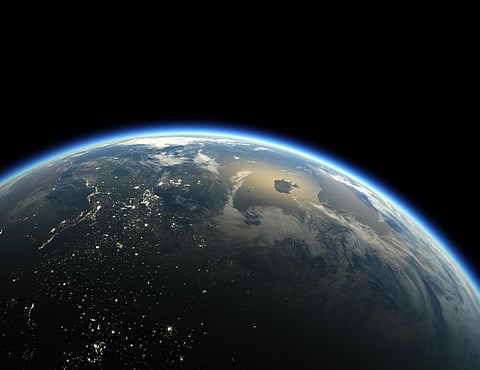

The successful phasing out of banned substances as envisioned by the Montreal Protocol has set the stage for a complete recovery of the ozone layer by the 2060s, a United Nations-backed panel of experts said at the American Meteorological Society’s annual meeting January 8, 2023.
While this is an achievement, the scientists warned of the detrimental effects of geoengineering technologies such as stratospheric aerosol injection on the ozone layer.
The first ozone hole was discovered in the stratospheric layers over the Antarctic in 1985, which allowed harmful ultraviolet (UV) radiation to pass into the lowest layer of the Earth’s atmosphere (troposphere) where humans live, according to a report by the British Antarctic Survey published the same year. UV radiation is linked with health hazards such as skin cancer, cataracts and other conditions in the eye and reduced immunity.
The Montreal Protocol enforced in 1989 called for a ban on the use and trade of 100 ozone-depleting substances (ODS), and 99 per cent of these have been successfully phased out, the Scientific Assessment Panel to the Montreal Protocol said, adding:
If current policies remain in place, the ozone layer is expected to recover to 1980 values (before the appearance of the ozone hole) by around 2066 over the Antarctic, by 2045 over the Arctic and by 2040 for the rest of the world.
The concentration of most of these substances in the atmosphere peaked in the 1990s and has been on a decline in the decades since the Montreal Protocol was brought into force. In August 2022, the global concentration of ODS reverted to the 1980s level, a major milestone in the ozone layer recovery efforts, according to the National Oceanic and Atmospheric Administration (NOAA), an American scientific and regulatory agency within the United States Department of Commerce.
But, once released, these substances linger in the atmosphere for a long time and continue to deplete the stratospheric ozone layer. Also, the reduction of ODS concentration over the Antarctic has been slow.
Thus, it will still take almost four decades for the ozone layer to fully recover.
The success of the Montreal Protocol inspires confidence in the scientific community and governments who are trying to reduce greenhouse gas emissions that induce climate change, the Scientific Assessment Panel said during the meeting.
The implementation of the 2016 Kigali Amendment to the Montreal Protocol for phasing out some hydrofluorocarbons (HFC), for instance, can gain from the success of the ODS ban, the scientists noted. Reducing the concentration of HFCs can help avoid 0.3-0.5°C of global warming over pre-industrial levels by the end of this century.
“Ozone action sets a precedent for climate action. Our success in phasing out ozone-eating chemicals shows us what can and must be done — as a matter of urgency — to transition away from fossil fuels, reduce greenhouse gases and so limit temperature increase,” said World Meteorological Organization (WMO) Secretary-General Petteri Taalas.
But the panel flagged one concern: Geoengineering experiments to reduce global warming can damage the ozone layer.
“For the first time, the Scientific Assessment Panel examined the potential effects on ozone of the intentional addition of aerosols into the stratosphere, known as stratospheric aerosol injection (SAI),” the panel noted during the meeting.
SAI can increase sunlight reflection, thereby lowering the amount of heat that enters the troposphere. But this method “could also affect stratospheric temperatures, circulation and ozone production and destruction rates and transport”, according to the scientists on the panel.
Injection of sulphuric acid into the stratosphere, for example, would damage the ozone layer, according to a 2016 study by researchers from the John A Paulson School of Engineering and Applied Sciences, Harvard University, Cambridge published in the journal PNAS.
Aerosol sprays, like other commonly used substances such as dry cleaning solvents, refrigerants and fumigants, contain ODS.
The latest assessment has been made based on extensive studies, research and data compiled by a large international group of experts, including many from WMO, United Nations Environment Programme, NOAA, National Aeronautics and Space Administration and European Commission.